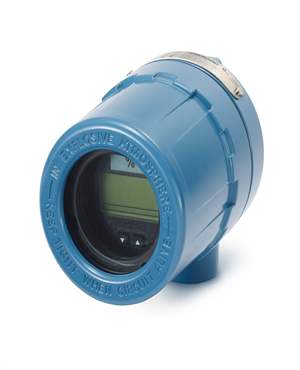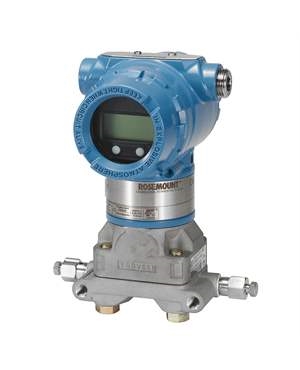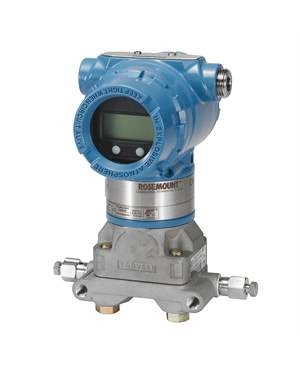Important Calibration Tips for Pressure Sensors
Brian Craig
February 18, 2019
Pressure transducers are used in various industries to measure the pressure of a given fluid and stop it from expanding. Differential pressure transducers are one of the important types of pressure transducers widely used across industries to measure the difference in a liquid’s gauge pressure when flowing through a pipe. They are also used to measure the difference between the pressures of two fluids. Owing to their heavy uses in different industries, it is necessary to perform pressure sensor calibration. This post discusses the importance of calibrating sensors in the transmitters, and tips for calibration.

Importance of Calibrating Sensors
Calibration is performed on a device to standardize measurements and reduce the manual error and the difference between the measurement outputs by two or more devices. Sensor is an important component of a pressure transmitter and sensor calibration is essential to bring in accuracy.
A sensor is affected by its surrounding physical factors. This means a pressure transmitter may be affected by environmental conditions, as well as media where they are used. So, for a sensor to give the most accurate output, calibration is necessary. It is also essential that a sensor detects the minutest of changes.
We cannot control a sensor physically; however, we can definitely set the parameters, for instance pressure range, based on our requirements and then observe the sensor output. So, while you can upgrade the sensor with the necessary hardware, devising an in-house calibration system in your organization would bring in better control and accuracy.
How to Calibrate Sensors
SI-accepted units are extremely important when calibrating any device such as a sensor or differential pressure transducer. This is because standard references are a must to get accurate readings on any device. Here are some tips to set standards based on your requirements.
- Set standards according to an already well-calibrated accurate sensor or transmitter.
- A crucial factor is to align your standards and formulae to the devices when calibrating to get the most accurate output.
- Sensors tend to give offset values due to slightly higher or lower curves than the ideal linear output. This can be corrected with various calibration methods such as single point, two point, and multi-point.
- Following the standards set by the National Institute of Standards and technology (NIST) makes the whole process of calibration easy. Using a device set according to the NIST standards to calibrate makes it even easier.
- Almost always, there would be more than one ways or methods to approach calibration. You should choose the one suitable for you and depending on the amount of accuracy required.
- To some extent, you can calibrate almost all electronic devices and sensors in-house as long as your calibration methods are set and standardized, else seeking professional help is recommended.
It is crucial that the transmitters are calibrated accurately. It is equally important to check the accuracy of your devices’ output at least once in a year. You can seek the help of the manufacturer or supplier to ensure the accuracy of calibration. The Transmitter Shop (TTS), a leading supplier of branded pressure transducers, provides calibration services using SI-traceable units.
Related Posts
- What are the Steps Involved in Calibrating Pressure Gauge?
- All Important Questions on Reconditioned Transmitters Answered
- Is Remanufactured Transmitter a Better Option than a New One?
- Differential Pressure Transmitters: How Do They Help in Flow Measurements?
- 3 Whats that Explain How Often You Should Calibrate Pressure Transducer
- Guidelines for Troubleshooting Pressure Transducers
- Learn How to Calibrate a Pressure Transmitter – II
- Learn How to Calibrate a Pressure Transmitter
- Know Three Interesting Uses of Pressure Transmitters
- The Features and Benefits of Rosemount 1199 Direct Mount Transmitters
- 3 Major Pressure Transmitter Technologies That Made the Device Popular
- An Unconventional Guide to Selecting the Right Pressure Sensor
- Factors To Be Considered While Differentiating $40 and $400 Pressure Transmitters
- Tips to Augment the Performance and Service Life of Pressure Transmitter
- Factors of Consideration When Choosing Pressure Transmitters
- 5 Most Popular Pressure Transmitter Technologies
- Important Calibration Tips for Pressure Sensors
- Tips to Improve the Performance of Pressure Sensors
- Factors to Consider When Choosing a Pressure Transmitter Manifold
- Safety Tips for Differential Pressure Transmitter Operation
- Impact of Shock and Vibration on Pressure Transducer
- Rosemount 3051S vs 3051C Transmitter – What is Your Choice?
- Rosemount 2088 Vs Rosemount 3051 – A Few Points of Differences Discussed
- What Are Diaphragm Seals and Their Types?
- Difference in Conventional Transmitters and Smart Transmitters
- How to Choose Diaphragm Seals for Your Application?
- How to Select Pressure Transmitter for Your Application?
- Remote Seals: Significance, Working Principle & Applications
- How Do You Calibrate A Flow Transmitter?
- What is Absolute Pressure Transmitter & how does it work?
- HART Communication Protocol: Overview, Working Principle, Benefits in Industrial Automation
- Absolute and Gauge Pressure Transmitters - Overview and Working Principle
- Flow Meter vs Flow Transmitter: Know the Difference
- Temperature Transmitter: How to Select The Efficient One for Your Application?
- How Do You Test for 4 to 20mA Signal in a Pressure Transmitter?
- Multivariable Transmitter: What Is It and How Does It Work?
- Pressure Transmitters vs. Pressure Transducers: Learn the Differential Characteristics
- Procedure to Calculate Accuracy of Pressure Transmitter Discussed
- An Ultimate Selection Guide for Flow Transmitters
- The Benefits and Challenges of HVAC System Balancing
- Understanding Pressure Ranges and Units for Fluid System Monitoring
- Understanding the Impact of Pressure Fluctuations on Drying Performance
- Monitoring and Controlling Energy Production in Power Plants
- Common Challenges in Air Flow Measurement and How to Overcome Them
- Pressure Monitoring in Pump Systems: A Comprehensive Guide
- Exploring Density and Viscosity Measurement in Industrial Processes
- Steam Boiler Drum Level Measurement A Comparison of Control System Technologies
- Furnace Flame Sensor Faults Everything You Need to Know for Safe Operation
- Comparison between Multi Valve Manifolds Block Valves and Bleed Valves
- Understanding Electrochemical Detection: Principles, Techniques and Environmental Application
- How Can Greenhouse Gas Emissions Be Reduced?
- Furnace Flame Sensor Faults Everything You Need to Know for Safe Operation
- Understanding Electrochemical Detection: Principles, Techniques and Environmental Application
- How Can Greenhouse Gas Emissions Be Reduced?
- Pneumatic Pressure Controllers: A Safe Choice for Hazardous Areas
- A Practical Guide to Vacuum Measurement and Operation
QUICK ENQUIRY







